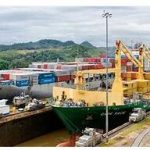After the deep fall of all the former Soviet republics after the end of the Union (high inflation, bankruptcy of many companies, unemployment, etc.) in the mid-1990’s, Kazakhstan’s economy initially developed positively. The great wealth of raw materials, especially crude oil, but also natural gas, coal, uranium, iron ore, copper, chromium, titanium, tungsten, nickel, phosphorus, gypsum, silicon, lead, zinc, gold, silver, manganese, and rare earths, helped many other. In addition, there was a consistent state privatization policy, relatively favorable conditions and the successful targeted recruitment of foreign investors – albeit mainly in the raw materials sector. Kazakhstan now counts also one of the largest investors abroad.
However, the successful close connection with the global economy also has its downsides. The economy was shaken by the Asian crisis as early as 1998, and the global financial crisis in 2007, which resulted in a banking and real estate crisis in Kazakhstan, had an even stronger impact. To protect against the famous Dutch disease and fluctuating oil prices, a national fund was created in 2000, into which part of the oil revenues is paid. In January 2015, 72 billion US dollars should have been in it, a year later by only 64.2 billion US dollars reported. Not to be confused with this is the National Welfare Fund Samruk-Kazyna, established in 2008, which has shares in approx. 600 state-owned companies and is supposed to be an important instrument for state support and modernization of the economy, but its activities are not undisputed.
In December 2012, President Nazarbayev declared the goals of the currently applicable Strategy 2030 – Kazakhstan should catch up with the 50 strongest industrialized nations in the world – as achieved and defined in the new ” Kazakhstan 2050″ strategy as a new target to join the group of 30 globally leading economic nations. To this end, the strategy provides for the modernization of state economic policy and the rejuvenation of its cadres, promotion and support for private entrepreneurs and significant improvements in social policy. Diversification remains an important goal of state economic policy, ie one wants to move away from the strong focus on oil exports. Instead, production and export figures in the manufacturing industry are to be increased, new technologies introduced and energy consumption reduced. In addition to cushioning the global crisis, the creation of new jobs and the promotion of the regions are on the agenda. After having focused on the expansion of large companies for a long time, the promotion of small and medium-sized companies must now also be promoted. At the beginning of 2013, their share of GDP was only less than 20%. In addition, the major Chinese initiative under the heading Silk Road or One Belt, One Road (OBOR) is currently kicking off the transport infrastructure as a prerequisite economic success expanded. In this context, the (expansion) construction of an east-west railway line from the Chinese border to the Caspian Sea was agreed with China. However, the latent sinophobic mood in large parts of the population could become a problem for further successful economic cooperation, as could widespread corruption.
In 2014, the country’s leadership was apparently surprised by lower growth rates than in previous years. In 2013 the GDP was about 232 billion US dollars, the GDP growth was 6%; In 2014 it was 212 billion US dollars and 4.3% and then in 2015 it was only 42.9 billion US dollars (1.2%). In February 2014, the tenge had to be devalued by almost 20%. The postponement in the start of oil production in Kashagan had an impact, but above all the ailing Russian economy caused problems with the close connection between the two economies. The globally falling oil price did the rest, now taking revenge for years through a necessary diversification the economy was only talked about. Even four years after the beginning of the crisis, it is considered the most important, but not achieved, means of consolidating the economy. In a speech to the nation in November 2014, President Nazarbayev presented an anti-crisis program called Nurly Zhol (Heller Weg), financed by the National Fund, which primarily provides for investments in infrastructure. With the lack of diversification of the economy, Kazakhstan has little influence, the ever-falling oil price made the economic situation more and more difficult, plus the devaluation of the Chinese currency. On August 19, 2015, the tenge was devalued by 4.5%, the next day its exchange rate released, which led to a further devaluation of 26% in one day. This did not mean that the downward slide had come to an end, at the end of 2015 the tenge was more than 50% lower than at the beginning of the year. The country’s leadership is responding with various anti-crisis measures. Among other things, the president announced the privatization of various large state-owned companies, which has raised public concern. The falling value of money, price increases and falling wages represent a burden on private household budgets and social peace. The economic situation does not mean that the crisis will end anytime soon, and the lower state revenues will force many more reforms. At the end of 2017, the tight financial situation meant that previously tolerated illegal cash outflows by the elite were no longer accepted without comment. Above all, observers believe that an effective fight against widespread corruption is necessary. The continued western and US sanctions against Russia also had an impact in Kazakhstan and made a recovery of the tenge difficult. Nevertheless, gradually light appeared on the horizon, 2018 GDP growth was 4.1%, 2019 4.5%. President Tokayev announced extensive economic reforms after his election in summer 2019. However, the corona crisis is currently having a negative impact on the country’s economy in many ways, and the first anti-crisis measures have been taken.
According to ehistorylib, Kazakhstan is a member of both ECO and CAREC. After having worked closely with Russia and Belarus in the customs union since 2010, this was intensified from 1.1.2015 through its further development into the Eurasian Economic Union (EEU). The accession to the EEU was not only rated positively in the country beforehand, the crisis-ridden economic development of its member states did not increase enthusiasm. Many problems are still unsolved, which is also reflected in the results for 2016. A successful entry into the WTO was concluded in mid-June 2015, and Kazakhstan has been a member of the organization since November 30, 2015. The statements about the effect of this membership are quite different.









